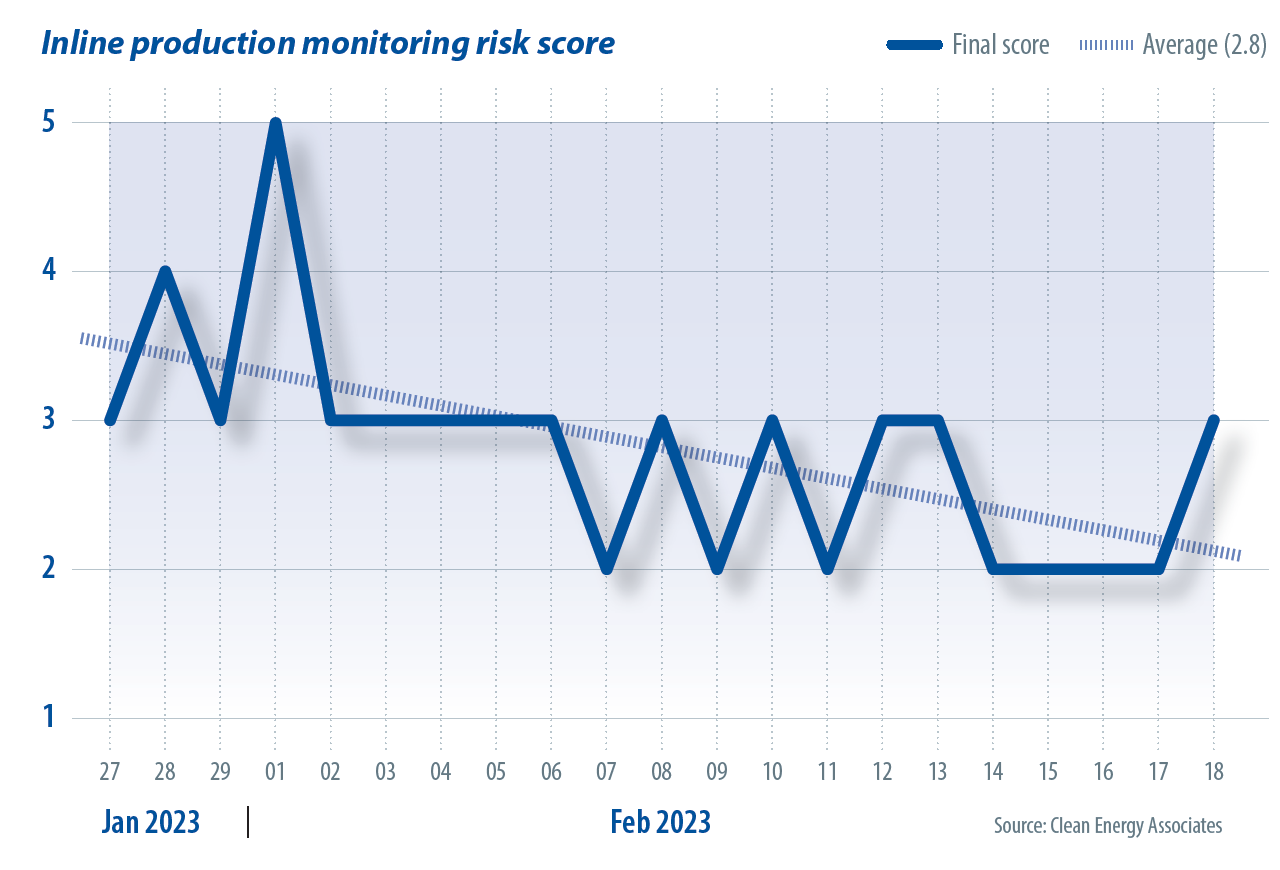Ensuring Fab Quality
by Joerg Althaus
This article was originally published in pv magazine - April 2023 edition.
With a plethora of new production lines announced in the wake of the US Inflation Reduction Act (IRA) – and European Union legislators following President Joe Biden’s example – renewables developers should be wary about the high defect rates associated with new fabs, reports Jörg Althaus, Director of Engineering at Clean Energy Associates.
The desire for domestic manufacturing is a clear trend in the energy transition. Tricky trade disputes and import restrictions, plus a wave of incentives in the US’ Inflation Reduction Act (IRA) and similar EU proposals, are poised to upend supply chains and reshore manufacturing.
The emphasis on domestic supply chains in recent legislation means new projects – from mining to product assembly – are rippling throughout the US and Europe. Quality assurance is poised to be a key risk factor as brand-new factories assemble PV modules, inverters, and batteries.
Manufacturers may try to use “Made in America” or “Made in Europe” labels to convey quality, but all new factories face a learning curve to match the high standards of seasoned overseas counterparts. As processes are ironed out and new staff trained, robust quality assurance will be needed to maintain the industry’s reputation for quality.
Automated assembly lines are not immune either. A new factory could pump out plenty of defective equipment before realizing machines were incorrectly calibrated or configured. How can buyers ensure a high standard of purchased products?
Review Contracts
Firstly, thoroughly review bill of materials and quality requirements with your supplier. This involves negotiating “gold standard,” industry-leading quality criteria both parties agree on. Ideally, your contract should clearly state the threshold for whether a product passes or fails.
The bill of materials needs to be reviewed for supply security. With localized production, it is important to ensure the upstream supply chain is secured by the supplier.
PV module makers, for example, need key suppliers of glass, encapsulation material, frames, etc. to deliver at required quantities and quality. For solar cell manufacturers, this becomes more complicated due to multiple steps from polysilicon through ingot pulling and wafer cutting to final cell production.
While building a solar cell line has its challenges, it is during the ingot stage where supply chain issues are most likely to arise. Any truly “Made in Europe” or “Made in America” products will need to consider all of those components and production steps.
Including quality criteria in the supply agreement is equally critical, as highlighted by a recent example where the buyer had a tight timeline to source PV modules and was unable to get a gold standard included in the supply contract. My company, Clean Energy Associates, was brought in during production.
We found cold soldering defects on a significant number of modules. Such defects can lead to serious implications for the long-term reliability and performance of the modules, but were not considered a defect according to the supplier’s internal criteria.
Fortunately, the buyer was able to negotiate with the supplier after the fact to secure an enhanced warranty for the modules. Not all buyers will be as fortunate in the same situation.
Production Monitoring
New factories are notorious for high defect rates. In my experience, even reputable veteran manufacturers can have high defect rates when starting a new fab. This is expected as staff need to be trained and equipment properly configured. Accordingly, an initially high frequency of thirdparty in-line production monitoring is recommended, to catch defects as they arise. Failure rates in new factories typically go down over time.
Buyers should expect such hurdles from a new factory and can communicate their expectations around production monitoring.
Third-party verification
Alongside communicating about standards directly with a supplier, using a third-party quality assurance provider adds another layer of protection. This third party can hold the supplier accountable to the quality criteria agreed upon in a contract.
Merely the possibility of a thirdparty verifier performing quality assurance tests can help secure a higher quality product. Similar to a home security yard sign to deter burglars, a supplier that knows there’s verification explicitly in the contract, will encourage higher quality products.
Wiggle room
It is important to anticipate the potential delays that could arise as these quality assurance processes unfold in a new factory. If a defect is not detected before a buyer’s components arrive, it will take even more time to mitigate the issue and receive a corrected shipment.
This can be true for any equipment developers use. PV modules are typically perceived as the most troublesome component but, nonetheless, system racking, inverters, trackers, and energy storage systems can all have quality control issues. Strong procedures up front can usually mitigate finding such problems downstream. However, it is worth baking in a buffer to a project timeline in case of an issue at a new factory.
This exciting moment in the clean energy transition requires renewed commitment to quality assurance. The industry landscape is evolving as junior and veteran manufacturers alike look to build out new production facilities in the US and Europe.
In this period of high demand and constrained supply for clean energy products, buyers may feel they lack the bargaining power to demand high quality standards with sellers. However, staying committed to rigorous quality control will help buyers avoid cumbersome defects and maintain a company’s reputation for high-quality products.
Joerg Althaus is CEA’s Director, Engineering Services and ESG











